
New modular university complex in Brno!
It is probably clear to you that in developed countries such as the USA, Japan, Germany, or the Netherlands, modular architecture has been in use for more than 50 years. But what does it look like in our country? Is modular architecture popular among Czech and Slovak architects? The manufacturer of modules, KOMA MODULAR CONSTRUCTION, has been long-term increasing the popularity of modular construction, particularly through architectural competitions. This year, designs for a university building, STING, were created in Brno – Jundrov. We have the results.
The STING Academy, which needs to expand its existing complex of buildings for its students, is thrilled with the modular extension and the ideas from more than thirty competitors from Czech and Slovak architectural schools. Thanks to the high level of the competition projects, the school's owners are considering collaborating with the finalists of the competition on the realization of the extension. But what exactly is modular construction?
Many people envision rather building cells or maximum basic housing when they hear the phrases "housing container" or "living module." However, architects can build attractive houses in record time using modules. This can lead to great architecture (depending on the architect) with many advantages and full comfort for its residents or visitors.
The leading manufacturer of living containers, KOMA MODULAR CONSTRUCTION, therefore announces a student architectural competition every year, aimed at changing or at least challenging established assumptions. This was also achieved in the fifth year of the architectural competition. Martin Hart from KOMA MODULAR CONSTRUCTION commented on the competition: “Students were able to convince the investor - the STING Academy, with their designs that an extension made of modules is not only fully viable but also incomparably faster and architecturally beneficial.”
The advantages of modular construction lie primarily in the speed and flexibility of the build. Thanks to the industrial production of most components, financial costs are reduced by 15 – 30% compared to standard construction. Additionally, 90% of the assembly of modules takes place in a factory under stable climatic conditions, similar to wood constructions or cars. This means that environmental pollution at the construction site is minimized, which is pleasant not only for the environment but also for the residents nearby. At the construction site, only the connection of modules into the "final shape" needs to be addressed. There are also significant savings in time and energy when establishing the modular building. It is not necessary to create a foundation slab; only the placement of foundation pads or strips is sufficient.
Modules built in the factory achieve excellent thermal insulation properties even with relatively thin walls. Therefore, the investor has more usable space with the same built-up area. Last but not least, among the great advantages of modular construction is the mobility of the building, easy disassembly, and moving it.
“In practice, this means that if a municipality, for example, needs a kindergarten but is unsure about the long-term use of the building, it will choose modular construction. When interest in places in the kindergarten wanes, the building can simply be disassembled and moved to another municipality or sold.” Martin Hart adds to the advantages of mobility.
Thanks to this, we can also talk about an environmentally friendly solution because the buildings are not "single-use" but can change their function, purpose, and area. Ultimately, it's up to the architect to choose the materials used in the infills – the walls of the module. Technically, wood, sandwich panels, metal, plastic, or large-format glass can be embedded into the structural junctions.
The first prize was awarded to Ing.arch. Ondřej Mundl, the second prize went to Bc. Marek Šnyrch and Bc. Hana Typltová, and the third prize was awarded to Ing.arch. Andrea Kubná, Ing.arch. Ondřej Lipenský, and Ing.arch. Michal Volf. These winners received their cash prizes in Bratislava at the international conference "Modular Architecture in the City of the 21st Century" from the hands of the guru of German container architecture, Prof. Hana Slawik, and from Ing. Martin Hart, the marketing director of KOMA MODULAR CONSTRUCTION.
Judge for yourself whether the solution for the STING Academy extension is attractive.
The STING Academy, which needs to expand its existing complex of buildings for its students, is thrilled with the modular extension and the ideas from more than thirty competitors from Czech and Slovak architectural schools. Thanks to the high level of the competition projects, the school's owners are considering collaborating with the finalists of the competition on the realization of the extension. But what exactly is modular construction?
Many people envision rather building cells or maximum basic housing when they hear the phrases "housing container" or "living module." However, architects can build attractive houses in record time using modules. This can lead to great architecture (depending on the architect) with many advantages and full comfort for its residents or visitors.
The leading manufacturer of living containers, KOMA MODULAR CONSTRUCTION, therefore announces a student architectural competition every year, aimed at changing or at least challenging established assumptions. This was also achieved in the fifth year of the architectural competition. Martin Hart from KOMA MODULAR CONSTRUCTION commented on the competition: “Students were able to convince the investor - the STING Academy, with their designs that an extension made of modules is not only fully viable but also incomparably faster and architecturally beneficial.”
The advantages of modular construction lie primarily in the speed and flexibility of the build. Thanks to the industrial production of most components, financial costs are reduced by 15 – 30% compared to standard construction. Additionally, 90% of the assembly of modules takes place in a factory under stable climatic conditions, similar to wood constructions or cars. This means that environmental pollution at the construction site is minimized, which is pleasant not only for the environment but also for the residents nearby. At the construction site, only the connection of modules into the "final shape" needs to be addressed. There are also significant savings in time and energy when establishing the modular building. It is not necessary to create a foundation slab; only the placement of foundation pads or strips is sufficient.
Modules built in the factory achieve excellent thermal insulation properties even with relatively thin walls. Therefore, the investor has more usable space with the same built-up area. Last but not least, among the great advantages of modular construction is the mobility of the building, easy disassembly, and moving it.
“In practice, this means that if a municipality, for example, needs a kindergarten but is unsure about the long-term use of the building, it will choose modular construction. When interest in places in the kindergarten wanes, the building can simply be disassembled and moved to another municipality or sold.” Martin Hart adds to the advantages of mobility.
Thanks to this, we can also talk about an environmentally friendly solution because the buildings are not "single-use" but can change their function, purpose, and area. Ultimately, it's up to the architect to choose the materials used in the infills – the walls of the module. Technically, wood, sandwich panels, metal, plastic, or large-format glass can be embedded into the structural junctions.
The first prize was awarded to Ing.arch. Ondřej Mundl, the second prize went to Bc. Marek Šnyrch and Bc. Hana Typltová, and the third prize was awarded to Ing.arch. Andrea Kubná, Ing.arch. Ondřej Lipenský, and Ing.arch. Michal Volf. These winners received their cash prizes in Bratislava at the international conference "Modular Architecture in the City of the 21st Century" from the hands of the guru of German container architecture, Prof. Hana Slawik, and from Ing. Martin Hart, the marketing director of KOMA MODULAR CONSTRUCTION.
Judge for yourself whether the solution for the STING Academy extension is attractive.
The English translation is powered by AI tool. Switch to Czech to view the original text source.
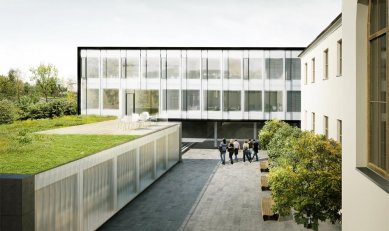
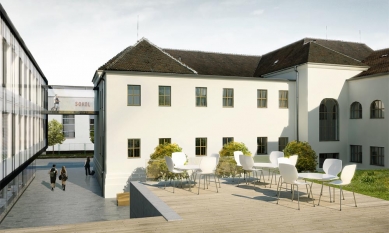

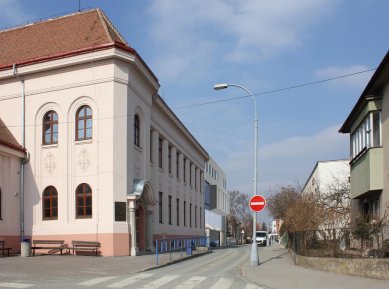
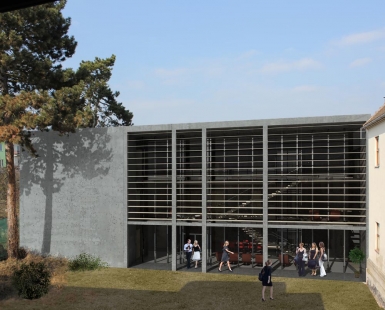

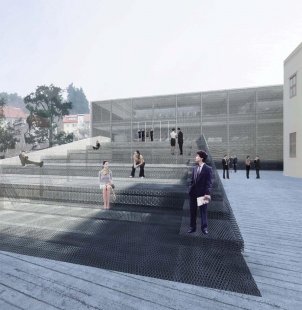
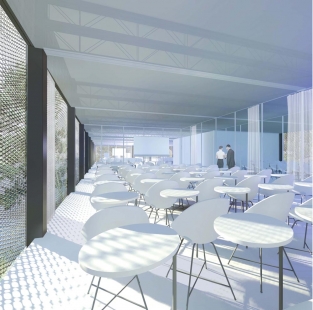
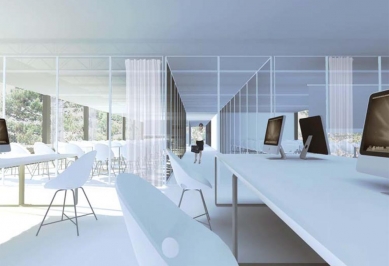
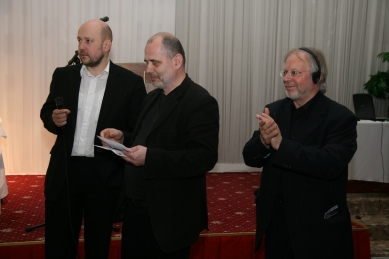
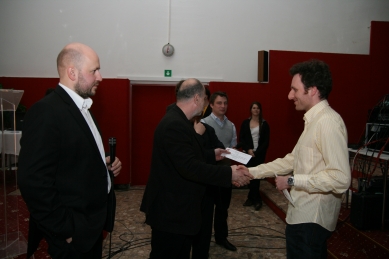
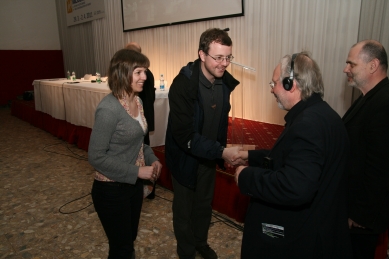
2 comments
add comment
Subject
Author
Date
cena
Filip Medek
20.05.11 02:39
výhodnost modulární výstavby
Martin Hart
23.05.11 06:36
show all comments
Related articles
2
30.03.2016 | Is the South Bohemian Philharmonic made of modules?
0
09.02.2012 | 6th year of the KOMA MODULAR architectural competition - designs for a seniors' home in Prague - Strašnice
0
28.09.2011 | Announcement of the 6th edition of the architectural competition on the topic of the use of modular spatial systems
0
18.10.2010 | Announcement of the 5th year of the architectural competition on the theme of modular construction













